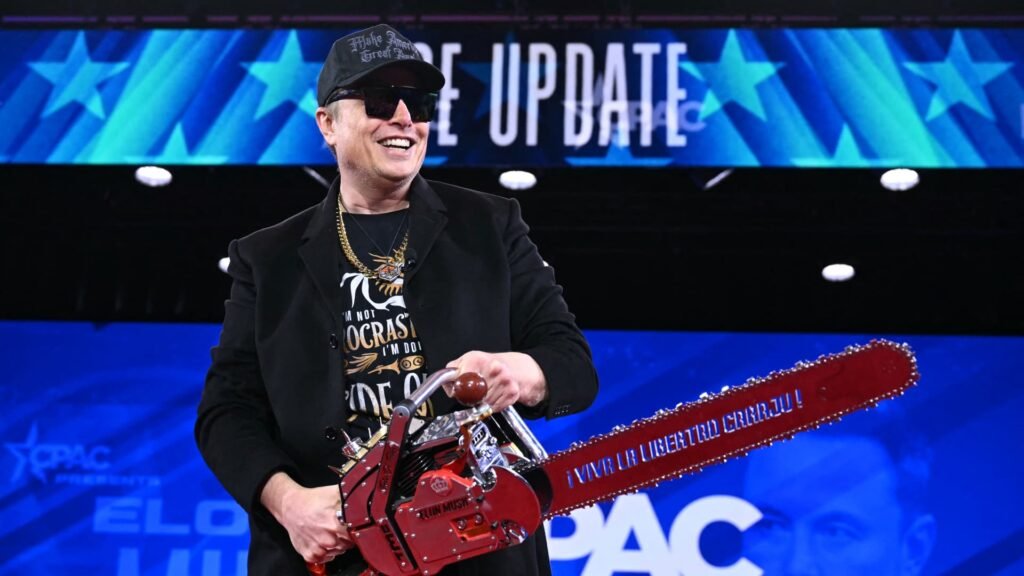Over the last few weeks:
-
A steady stream of high-profile writers and editors have left.
-
The Post announced the hiring of a lightly qualified, sub-Mendoza Line talent named Adam O’Neal to run its flagship Opinion section.
-
The still relatively new publisher, Will Lewis, aborted the only major initiative he’d undertaken. The centerpiece of Lewis’s tenure had been the creation of a “third newsroom” which would radically reconfigure the organization’s structure. This massive undertaking was killed while still in the concepts-of-a-plan phase.
All of this is bad and also only a partial list. Over the last year the Post has been involved in almost monthly car wrecks:
-
In October 2024 the owner and publisher killed the paper’s endorsement of Kamala Harris. The publisher then lied to the public in his explanation of how the decision was made.
-
In December 2024 a longtime executive editor left the Post and the publisher killed a reported story about her move.
-
In January 2025 the paper spiked an editorial cartoon because it featured the paper’s owner, Jeff Bezos. The Pulitzer-winning cartoonist, Ann Telnaes, resigned in protest.
-
In February 2025, Bezos and Lewis drove Opinion section editor David Shipley to resign after they refused to guarantee the section’s independence.
-
In March 2025, Lewis spiked a column by Ruth Marcus about what Bezos was doing to the Opinion section. Marcus resigned.
There are a couple things happening here. The trivial problem is that the Post has an incompetent publisher. He lied to the public and got caught. He pushed out people without thinking through the implications to the business. He couldn’t deliver even a minimally viable product on his one big initiative, the “third newsroom.”
So long as Will Lewis is the publisher, the Post cannot succeed. Full stop.
But there is a bigger problem at the Post: legacy systems.
Some years ago I interviewed for a job with the Post. I was impressed with everyone I met, but what struck me most was that they were hobbled by legacy systems. One example should suffice.
The main opinion section at WaPo is called Post Opinion. This is the division that runs the editorial and op-ed pages and once ran the Sunday Opinion section. Post Opinion is, relative to the rest of the paper, a small division. But it punched above its weight within the business: A disproportionate share of new subscriptions to the digital product originated from Post Opinion content.
But WaPo had another, smaller opinion section housed under the News division. This rump opinion section relied heavily on freelance pieces submitted by outsiders. (As opposed to regular columnists, who make up the majority of Post Opinion content.) Frequently an outside writer would submit an op-ed to the Opinion section, have it rejected, and then would submit it to the other opinion section, which would accept it. On the website, it was impossible for an average user to tell which opinion section was the “real” one.
I asked one of the senior people I met to explain the rationale for this arrangement. He laughed and said it had been that way forever. No one quite remembered why this other opinion section existed, but because it lived under the News division, it had its own legacy stakeholders who defended its value.
Now imagine the dozens—hundreds?—of similar quirks that develop in a giant company over 150 years.
To each individual stakeholder, these quirks probably make sense. But from an institutional perspective, they create straitjackets. This is how companies, cultures, and organizations ossify.
In 2011, Rupert Murdoch’s News Corporation launched a new product: An iPad-only subscription newspaper, called the Daily.
The Daily was run by a bunch of Wall Street Journal editors out of offices at the Wall Street Journal. Yet it was its own company.
I was a columnist for the Daily and at the beginning of my tenure I had a long conversation about the business with the editor. I asked him why the Daily wasn’t a division of the WSJ, which would have made much more sense and saved a lot of money on overhead. Making it a standalone company seemed inefficient to me.
He explained that News Corps executives believed that setting up an iPad-only publication from inside the Journal—which had so many legacy interests—would have taken forever. There were simply too many pre-existing structures and stakeholders.
But there was another consideration: If the Daily failed while it was part of the Journal, there would have been many people interested in keeping it going past the point where viability had been disproven. It wouldn’t be able to fail fast. Which, by the way, it did.
I thought about the Daily a lot when I was talking with the Post.
It is possible for legacy organizations to evolve and thrive. The New York Times has achieved this by becoming a mobile gaming company and lifestyle brand that also publishes a newspaper.
The Atlantic is evolving, right now: The 168-year-old literary magazine has reinvented itself as a full-fledged news organization which is making a run at overtaking the WaPo as the second-most important American news source.
Overcoming legacy systems requires extraordinary vision, wisdom, and leadership at the strategic level. In the Bezos era, the Post has been blessed with none of those.
Some examples:
In 1984 the Post’s parent company bought the test-prep service Kaplan for $40 million. This was an excellent move which diversified the company and added a growing sector to its portfolio. Kaplan eventually accounted for more than half the Post’s annual revenue. When Jeff Bezos purchased the paper in 2013, he declined to buy Kaplan as part of the bundle.
At a moment when other publications were looking to diversify (for instance: the New York Times buying Wordle), the Post became more leveraged.
One of Bezos’s first initiatives was to try to turn the Post into a B2B vendor. The Post had built a custom content management system called Arc; someone in Bezos’s orbit decided that Arc could be its own business. The Post spent a lot of resources turning Arc into a product it could license to other publishers, with the dream of creating an ecosystem of Arc-powered publications that could become a platform exerting network effects.
It didn’t work. Arc has remained a constant drag on the company.
The latest Post gambit is a project called Ripple, whereby the paper will reprint content from a huge base of outside writers with no connection to the brand or its audience.
Ripple is the dumbest idea in media since Quibi and betrays a fundamental misunderstanding of what the Post is, who its audience is, and where the industry is heading. Let me explain.
At the moment, journalism is preparing for an onslaught of commoditized, AI-generated content. Everyone who isn’t stupid is trying to build direct relationships with their audience—because that’s the only moat human-made journalism will have against zero-marginal-cost AI content.
In the face of this coming revolution the Post’s big idea is to . . . create a platform for commoditized content that has no connection to its audience.
Since Watergate, the Washington Post has been America’s second most important news organization. It is Avis to the NYT’s Hertz; Pepsi to its Coke.
That’s a vital function. We don’t have a duopoly in national print news—but we’re not far from it. It’s the Times, then the Post . . . and then everyone else.
The Post has done essential journalism vital to our democracy. It has also, by its existence, kept the Times honest and pushed it to be better.
A healthy democracy would prefer to have ten major national news orgs; but it needs at least two of them. From where I sit, I’d argue that the Post either has lost or is about to lose its #2 position to the Atlantic. Once that slip is obvious to everyone, I would expect the bottom to drop out from the business. We could be five years away from the Washington Post being nothing more than a high-rent version of the Washington Times.
I want to be clear about one thing: I’m not cheering this fall. I’m lamenting it. The Post’s decline is a body blow to the liberal order.
I have spent a good part of my adult life meditating on the economics of media because if the economics don’t work then the journalism can’t happen. Financial sustainability is the first task for any media company.
I won’t catalogue the ways in which the internet has changed media economics. I’ll just say that these changes are ongoing and there are more on the horizon.
The internet revolution was about lowering to zero the marginal cost of distributing content. The AI revolution is about lowering to zero the marginal cost of creating content. That is going to transform media all over again—probably in ways that are deleterious.
No one knows exactly how it will shake out, but in the broadest sense a few things seem inevitable:
-
Commoditized content will be overwhelming, indistinguishable, and free.
-
There will be so much more content generated that discovery becomes difficult to impossible.
-
If we extrapolate from the Facebook experience, the vast majority of consumers will happily accept AI-generated content, irrespective of its quality. (Or veracity.)
-
This will create a flight to quality among the remaining minority share of the public.
-
Traditional journalism will have to be supported by this minority.
Oh, and by the way: While all of this is happening, America is in the midst of an authoritarian attempt. Meaning that the power of government has been deployed against media orgs that do not accommodate themselves to the regime.
I sometimes wonder if we could have built The Bulwark from inside another publication. I think the answer is No.
The Bulwark happened because a bunch of people, political changes, and technological developments aligned at the right time. And also because we were starting from a blank page. We had no legacy considerations. We could focus everything on serving you guys.
We were lucky. But we’re not done. We have a mission and a vision: We are here to build a community that will help save democracy. And we’re going to do it with you.
The Washington Post is dying, but we’re not. Come ride with us.






